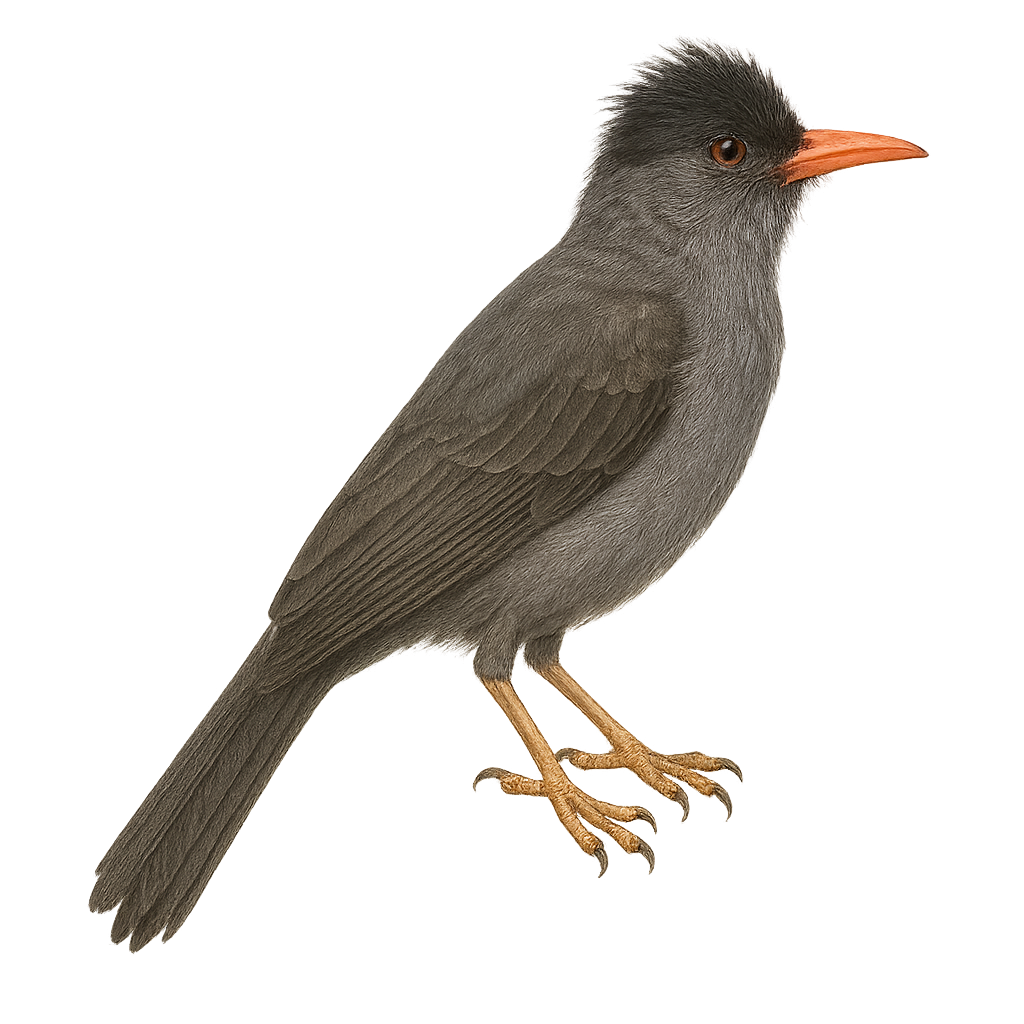Your wildlife photography guide.
Explore the madagascar bulbul in detail, study its behavior, prepare your shots.
Where to observe and photograph the madagascar bulbul in the wild
Learn where and when to spot the madagascar bulbul in the wild, how to identify the species based on distinctive features, and what natural environments it inhabits. The WildlifePhotographer app offers tailored photography tips that reflect the madagascar bulbul’s behavior, helping you capture better wildlife images. Explore the full species profile for key information including description, habitat, active periods, and approach techniques.
Madagascar Bulbul
Scientific name: Hypsipetes madagascariensis

IUCN Status: Least Concern
Family: PYCNONOTIDAE
Group: Birds
Sensitivity to human approach: Suspicious
Minimum approach distance: 10 m
Courtship display: September to November
Incubation: 12-14 jours
Hatchings: September to December
Habitat:
Humid forests, wooded areas, gardens
Activity period :
Primarily active during the day, with peak activity in the morning and late afternoon.
Identification and description:
The Madagascar Bulbul, or Hypsipetes madagascariensis, is an endemic bird of Madagascar and surrounding islands. It is characterized by its greyish plumage, black head, and bright orange beak. This bird measures about 24 cm in length and is known for its melodious song. It inhabits various environments, including humid forests, wooded areas, and gardens. An omnivore, it primarily feeds on fruits, insects, and nectar. The Madagascar Bulbul is a sociable bird, often seen in small groups. Although relatively common, it is crucial to preserve its natural habitat to ensure its long-term survival.
Recommended lens:
400 mm – adjust based on distance, desired framing (portrait or habitat), and approach conditions.
Photography tips:
To photograph the Madagascar Bulbul, it is advisable to use a 400mm lens or longer to capture detailed images without disturbing the bird. Look for it in humid forests or gardens where it is often active during the day. Be patient and discreet, as this bird can be suspicious. Take advantage of the natural morning light to get well-lit photos and listen for its song to locate it more easily.
The WildlifePhotographer App is coming soon!
Be the first to explore the best nature spots, track rutting seasons, log your observations, and observe more wildlife.
Already 1 429 wildlife lovers subscribed worldwide

